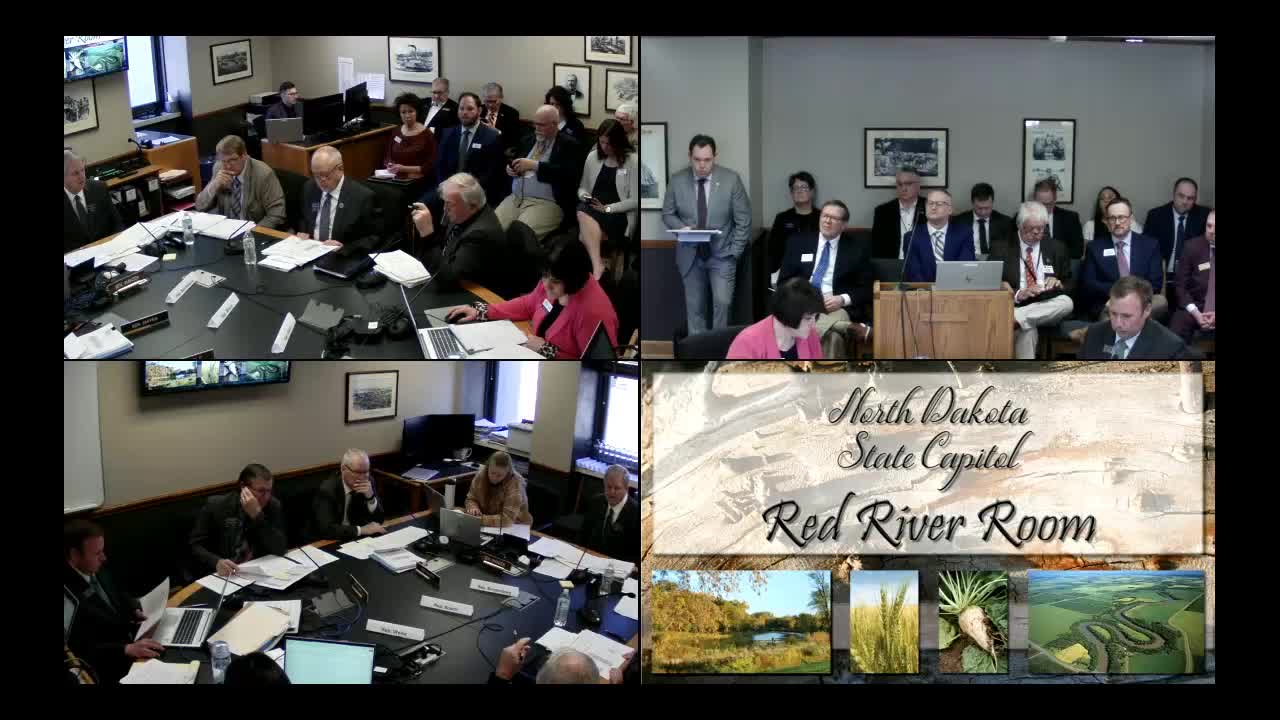North Dakota lawmakers evaluate bridge funding amid contractor capacity concerns
April 29, 2025 | Senate, Legislative, North Dakota
This article was created by AI summarizing key points discussed. AI makes mistakes, so for full details and context, please refer to the video of the full meeting. Please report any errors so we can fix them. Report an error »

In a recent meeting of the North Dakota Legislature's SB 2012 Conference Committee, lawmakers engaged in a critical discussion regarding the allocation of funds for infrastructure projects, particularly focusing on the challenges of spending proposed budgets effectively within the upcoming biennium. The committee examined a Senate proposal that suggested allocating $100 million for bridge repairs, but concerns were raised about the feasibility of utilizing such a large sum in a timely manner due to contractor availability and the capacity of local governments to manage the projects.
One key point highlighted during the meeting was the potential for inflated construction costs if large sums of money were allocated without the ability to spend them efficiently. Lawmakers expressed apprehension that excessive funding could lead to a bidding environment where costs escalate, ultimately undermining the intended benefits of the funding. The discussion underscored the importance of ensuring that any financial commitments made are realistic and can be executed within the designated timeframe.
Senator Dwyer and other committee members emphasized the need to balance the proposed funding with the actual capacity of the Department of Transportation (DOT) and local entities to complete projects. They noted that while North Dakota has a strong record regarding road conditions, the state still faces significant infrastructure needs that require sustainable funding solutions. The conversation also touched on the implications of revenue projections and the potential for future budget cuts, particularly in the context of the DOT, which historically faces reductions during tighter fiscal periods.
The committee explored the idea of adjusting funding sources, including the Prairie Dog fund, to ensure that the total amount allocated for transportation projects aligns with what can realistically be spent. This approach aims to prevent future legislative bodies from retracting funds that were not utilized, thereby fostering a more stable funding environment for infrastructure development.
As the committee continues to deliberate on these issues, the overarching goal remains clear: to establish a funding framework that not only addresses immediate infrastructure needs but also promotes long-term sustainability and efficiency in spending. The discussions from this meeting will likely shape the legislative agenda as North Dakota moves forward in addressing its infrastructure challenges.
One key point highlighted during the meeting was the potential for inflated construction costs if large sums of money were allocated without the ability to spend them efficiently. Lawmakers expressed apprehension that excessive funding could lead to a bidding environment where costs escalate, ultimately undermining the intended benefits of the funding. The discussion underscored the importance of ensuring that any financial commitments made are realistic and can be executed within the designated timeframe.
Senator Dwyer and other committee members emphasized the need to balance the proposed funding with the actual capacity of the Department of Transportation (DOT) and local entities to complete projects. They noted that while North Dakota has a strong record regarding road conditions, the state still faces significant infrastructure needs that require sustainable funding solutions. The conversation also touched on the implications of revenue projections and the potential for future budget cuts, particularly in the context of the DOT, which historically faces reductions during tighter fiscal periods.
The committee explored the idea of adjusting funding sources, including the Prairie Dog fund, to ensure that the total amount allocated for transportation projects aligns with what can realistically be spent. This approach aims to prevent future legislative bodies from retracting funds that were not utilized, thereby fostering a more stable funding environment for infrastructure development.
As the committee continues to deliberate on these issues, the overarching goal remains clear: to establish a funding framework that not only addresses immediate infrastructure needs but also promotes long-term sustainability and efficiency in spending. The discussions from this meeting will likely shape the legislative agenda as North Dakota moves forward in addressing its infrastructure challenges.
View full meeting
This article is based on a recent meeting—watch the full video and explore the complete transcript for deeper insights into the discussion.
View full meeting
